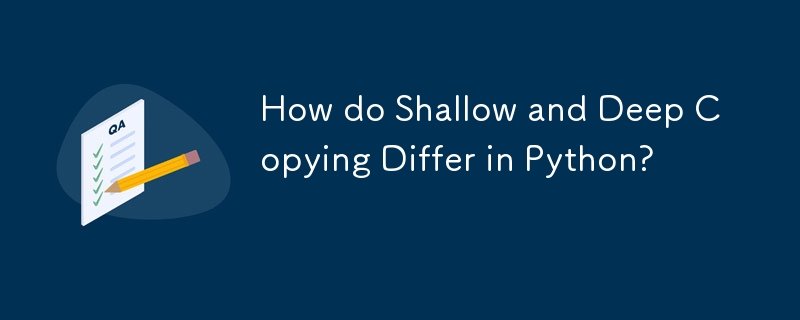

Copying Objects in Python
Creating an independent copy of an object is a common task in programming. In Python, there are two main ways to copy an object: shallow copying and deep copying.
Shallow Copying
Python's default copying mechanism is shallow copying. This means that a new object is created with a reference to the same fields as the original object. Any changes made to the fields of the new object will also be reflected in the original object.
Deep Copying
Deep copying, on the other hand, creates a new object with separate copies of the fields from the original object. This means that any changes made to the fields of the new object will not affect the original object.
To get a fully deep independent copy of an object in Python, you can use the copy.deepcopy() function. Here's an example:
<code class="python">import copy
# Original object
obj = {
"name": "Alice",
"age": 20
}
# Create a shallow copy
shallow_copy = obj
# Create a deep copy
deep_copy = copy.deepcopy(obj)
# Modify the shallow copy
shallow_copy["name"] = "Bob"
# Print the original and deep copy
print(obj) # Output: {'name': 'Bob', 'age': 20}
print(deep_copy) # Output: {'name': 'Alice', 'age': 20}</code>As you can see, the deep_copy retains the original values of the object, while the shallow_copy is affected by the changes made to the original object.
The above is the detailed content of How do Shallow and Deep Copying Differ in Python?. For more information, please follow other related articles on the PHP Chinese website!
 Usage of urlencode function
Usage of urlencode function
 What is the interrupt priority?
What is the interrupt priority?
 Registration-free CDN acceleration service
Registration-free CDN acceleration service
 The difference between Java and Java
The difference between Java and Java
 What to do if the computer desktop icon cannot be opened
What to do if the computer desktop icon cannot be opened
 How to sum three-dimensional arrays in php
How to sum three-dimensional arrays in php
 Introduction to virtualization software
Introduction to virtualization software
 How to insert video in html
How to insert video in html




